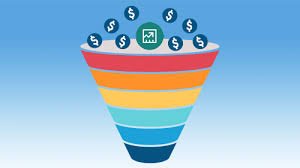
Defining a Sales Funnel
A sales funnel is a marketing term used to capture and describe potential customers’ journeys, from prospecting to purchase. A sales funnel consists of several steps, the actual number of which varies with each company’s sales model.
Well-built sales funnels without gaps allow companies to shepherd potential customers through the buying process towards purchase completion. By contrast, those funnels with gaps will lead to potential customers staying in the sales process without completion.
If you are stuck in the sales process, your answer may be due to the absence of funnel or a funnel that needs to be modified.
What is the importance of a sales funnel?
A sales funnel helps marketers understand a customer’s purchasing journey while also identifying the stage of the customer’s journey. These insights can be used to decide which marketing channels and activities will best guide the customer towards a purchase. A sales funnel also allows marketers to tailor and optimise their activities and messaging to increase conversions.
So, how does a sales funnel work?
As the name suggests, a sales funnel takes in many leads and prospects and narrows them down towards the bottom, giving you fewer paying customers. While the specifics of the sales funnel differ for all industries and companies, we can look at examples and best understand how they work and how to design our own.
Let’s look at the B2C sales funnel for an e-commerce website. A potential customer starts their journey as a visitor by visiting a site by clicking on a Google search result, social media post, or advertisement. When they browse the website, they might (and should) be offered a chance to sign up for the e-commerce site’s email list. If they do, they become a lead.
Depending on the contact details they provided, they can be engaged through various channels such as email, text, and phone. Their interaction with these marketing campaigns will likely nudge them to return to the e-commerce website to browse relevant products or special offers, turning them into prospects. From prospect to customer, it is then a matter of incentivising them enough with product offerings, messaging, or even a simple coupon code.
The 6 stages in a sales funnel
It’s important to note that not all companies’ sales funnels will have six levels or stages. Sales funnels vary in size and shape from company to company and industry to industry. However, a basic sales funnel can be described as consisting of six levels. Marketers can take inspiration from this basic structure to design a sales funnel that suits their needs.
1. Awareness:
The awareness stage is populated by the largest number of people at the very top of the sales funnel. These people, not quite ready to be prospects yet, have just had their first interactions with your company and its offerings. They don’t know much about your brand at this stage, but they are aware that it exists.
Think about an experience like this you have encountered. Maybe you have read an article about a new product and realize it could be very beneficial and you start a google search about it and see other items that are similar.
2. Interest:
The first interactions will hook some newly aware people and draw them slightly deeper into the funnel. With their interest piqued, these people will spend some time getting to know more about your company and your offerings. They might browse your website or catalogue, read your blogs, or peruse reviews from past customers.
The awareness step may have been an introduction to the product through a discount. You’re curious about other pricing for other items and want to explore.
3. Evaluation:
Armed with knowledge gathered during the interest stage, your prospects will double down on their efforts to learn more about your company and offerings. They may reach out to your customer service team with specific questions or fill out a form to access more information. Remember, by this stage, they may have already compared your offerings to those of your competitors. So, it is important to answer their questions and help them understand how your offerings can solve their problems or needs.
4. Negotiation and decision:
The prospect has almost decided to purchase your product or service. Depending on the nature of your offerings, they might begin negotiating over the price, terms of purchase, or both. But it’s fair to assume that they have a purchase intention at this stage.
5. Sale:
We’ve reached the bottom third of the sales funnel—the prospect and seller have negotiated the terms of the sale to their mutual satisfaction, and the prospect pays the seller to become a buyer officially.
6. Renewal or repurchase:
The sale stage is not the end of the sales funnel. Soon, the sales contract will be renewed. The customer must now decide whether to continue with the same seller. If so, there might be a fresh round of negotiations over price and purchase terms, followed by a renewal or repurchase.
Conclusion
We will continue this discussion in the next blog post. As you can see, it’s essential to build a sales funnel and do so effectively! Successful sales is all about the process and repeating the process that is successful. Repeat over and over. Care to explore your process for free? Give me a call at 440-212-4987 and let’s brainstorm what is working and what needs to be enhanced to bring about more successful sales!
